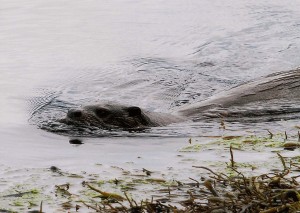 The ancient “Forest of Caledon” is reputed to have stretched from the Beauly Firth to the Argyll coast although it is still a matter of debate as to whether this was a continuous cover of forest or discontinuous. There are now scattered remnants to be found, albeit to our eyes still quite extensive tracts of woodland. The area that has the most publicity is the Abernethy Forest that is famous for, amongst many other aspects, the osprey site at Loch Garten admirably run for very many years by the RSPB. Other sites vary such as, in the north west, the woodlands at Rhidorroch near Ullapool. In the north lies the woodland at Amat whilst in the south east there is Ardgour and Glen Nevis. Each have their own characteristics but the collective animals and birds let alone the plants and insects are impressive by any standards.
The ancient “Forest of Caledon” is reputed to have stretched from the Beauly Firth to the Argyll coast although it is still a matter of debate as to whether this was a continuous cover of forest or discontinuous. There are now scattered remnants to be found, albeit to our eyes still quite extensive tracts of woodland. The area that has the most publicity is the Abernethy Forest that is famous for, amongst many other aspects, the osprey site at Loch Garten admirably run for very many years by the RSPB. Other sites vary such as, in the north west, the woodlands at Rhidorroch near Ullapool. In the north lies the woodland at Amat whilst in the south east there is Ardgour and Glen Nevis. Each have their own characteristics but the collective animals and birds let alone the plants and insects are impressive by any standards.
For me the most outstanding of all these remnants are much closer to Inverness and lie in the outstanding three glens of Affric, Cannich and Strathfarrar to the south west of Inverness. I always like to go to any of these glens at this time of the year as not only is the riot of colours outstanding but there is always the good chance of hearing the roaring of the red deer stags in their autumn rut. One of the dominant features of the glens is the three rivers, the Farrar, Affric and Cannich and these flow into the River Glass and then on to form the River Beauly. For the naturalist they attract breeding birds such as dipper and grey wagtail and the otter is there although secretive and rarely seen. The droppings of the otter, often called spraints, give them away and can often be seen on rocks on the side of the river. This is to mark out territory for any other males that may come along and to attract the females.
The woodland at this time of the year is spectacular with the bronze and yellow-gold leaves contrasting with the flaming red of the rowan trees. This year, as with many other parts of the Highlands, the rowans should have been hung with their characteristic clumps of red berries but there are none. Along the river sides are alders and their dark green leaves together with the green of the needles on the Scots pine contrasted with the birch and rowans. Parts of the woodland are dominated by bracken and although disliked by many people the rich colours add much to the scene. The combination of the rivers, the woodland and hills is an unforgettable experience especially with so much wildlife to see.
The three glens contrast with each other as far as visitors are concerned with vehicular access to all three. In Glen Affric a great deal of effort has been made, mainly by the Forestry Commission, to give the visiting public the chance to see and understand the area. Walks and interpretative panels are in various places and one of the walks, one of the shortest, around the Corrie Loch is thoroughly recommended. Cannich does not cater for people in the same way which suits some people. Glen Strathfarrar is the exception in that there is a locked gate but for most of the week there is a gatekeeper who will let you in and out. A few years ago Glen Strathfarrar was a National Nature Reserve but then it was de-declared and now that accolade goes to Glen Affric where the NNR was declared as recently as 2001. It begs the question as to whether the whole of these three glens would meet the criteria of a National Park?
